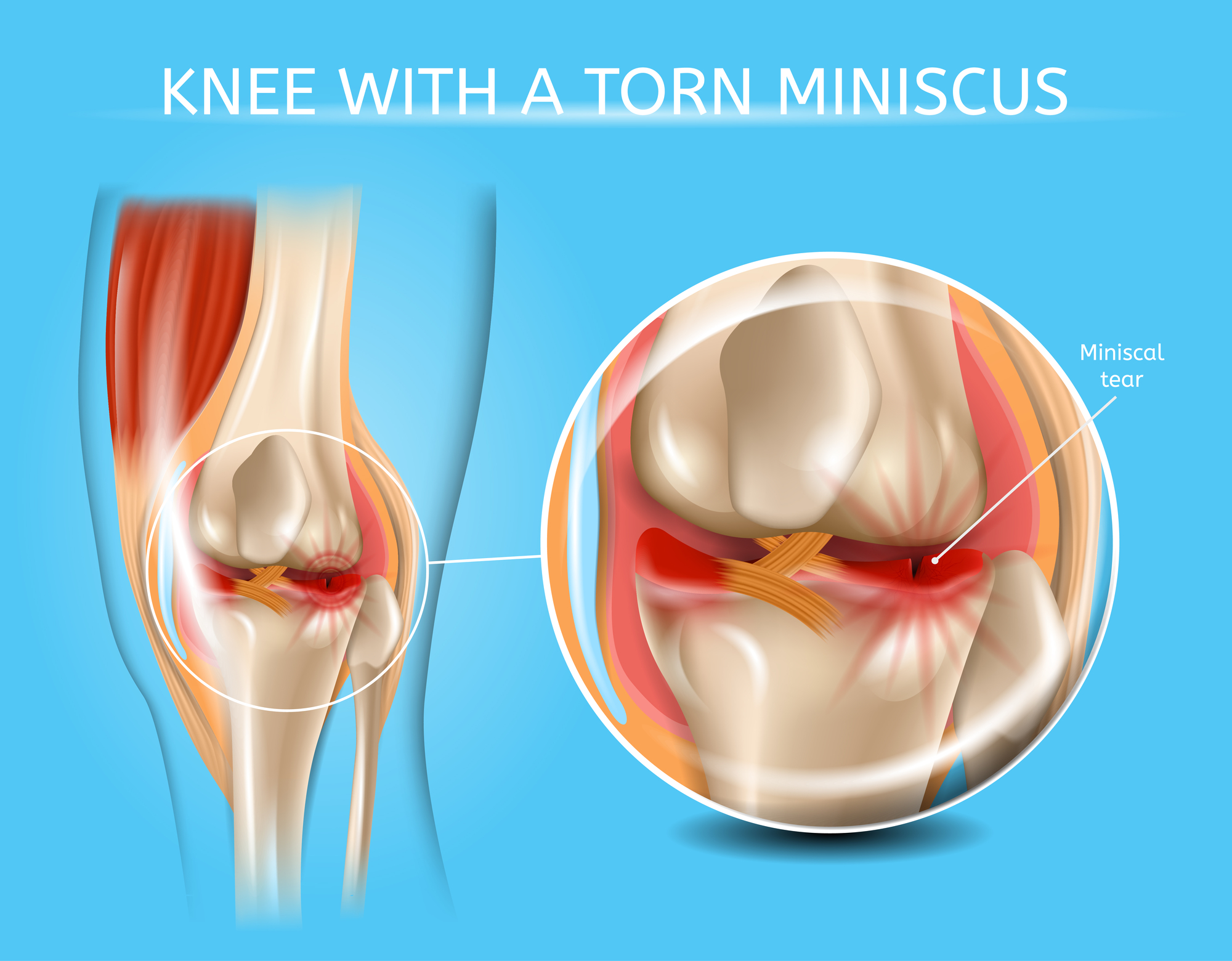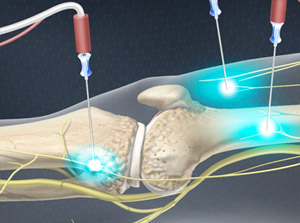Knee
The knee joint is the largest joint in the human body. Three bones meet to form the knee hinge joint: thighbone (femur), shinbone (tibia) and kneecap (patella). The hinge joint allows the leg to extend and bend back and forth with minimal side-to-side motion. Articular cartilage covers the surfaces of the bones where the bones meet. Knee menisci, two thick pads of cartilage on each side of the knee, act as shock absorbers, stabilize the knee, and facilitate motion.
Ligaments connect bones to other bones to hold them together and keep the knee stable. Tendons connect muscles to bones from the thighbone to the kneecap and from the kneecap to the shinbone. A bursa is a tiny, slippery, fluid-filled sac that reduces friction between the bones and soft tissues, muscles, and tendons.
The ligaments, tendons, and cartilage of the knee can be damaged while twisting, pivoting, and other movements not normally associated with every day activity or through sports injury.Additionally, knee degeneration can occur from osteoarthritis and other chronic conditions.
Tissue surrounding joints like the knee have poor blood supply. As such, injuries to these areas heal slowly and often incompletely because of insufficient cellular supply. Regenerative Medicine Orthobiologics applications of blood platelets or bone marrow aspirate utilize your own healing cells by applying the beneficial properties directly to damaged tissue to enhance repair and regeneration on a cellular level.



 Arthritis
Arthritis 




















































